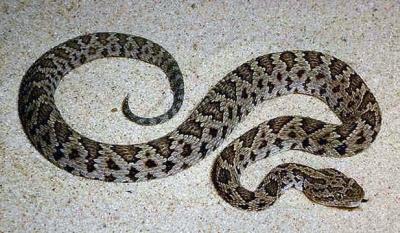Long-tailed rattlesnake is a poisonous species of snake occurring in western Mexico. Currently, there are no subspecies of this species. It is a pit viper..
 |
| Long-tailed Rattlesnake(Pit Viper) |
| Kingdom | Animalia |
| Phylum | Chordata |
| Subphylum | Vertebrata |
| Class | Reptilia |
| Order | Squamata |
| Suborder | Serpentes |
| Family | Viperidae |
| Subfamily | Crotalinae |
| Genus | Crotalus |
| Scientific Name | Crotalus stejnegeri |
Description
As one of the rarest rattlesnakes in the world due to its limited range and the difficult terrain it occupies, everything about this rattlesnake is a fun fact! The Sinaloan long-tailed rattlesnake was first known to science in 1897. This relatively small rattlesnake is found in western Mexico in forested habitat along the Sierra Madre Occidental. Its long tail can be up to 14.8% of its total body length with males having longer tails than females on average.
This rattlesnake is classified as Vulnerable by the IUCN primarily due to its restricted range. It is only known from around 12 collected specimens.
Length
Up to 60 cm; largest recorded specimen measures 72.4 cm
Color
Orange brown to ash to gray
Distribution
Mexico
Habitat
Pine-oak forest, tropical deciduous forest, subtropical dry forest
Venom Fact
Venomous
Mode of Reproduction
Ovoviviparous (producing young by means of eggs hatched inside the body of the parent)
IUCN Conservation Status
Vulnerable
The long-tailed rattlesnake (Crotalus stejnegeri) is listed as "vulnerable." This species lives in western Mexico. It is a rare species, according to the IUCN, and is known only from a few specimens. The population is likely decreasing due to loss of habitat caused by logging and agriculture

Comments
Post a Comment